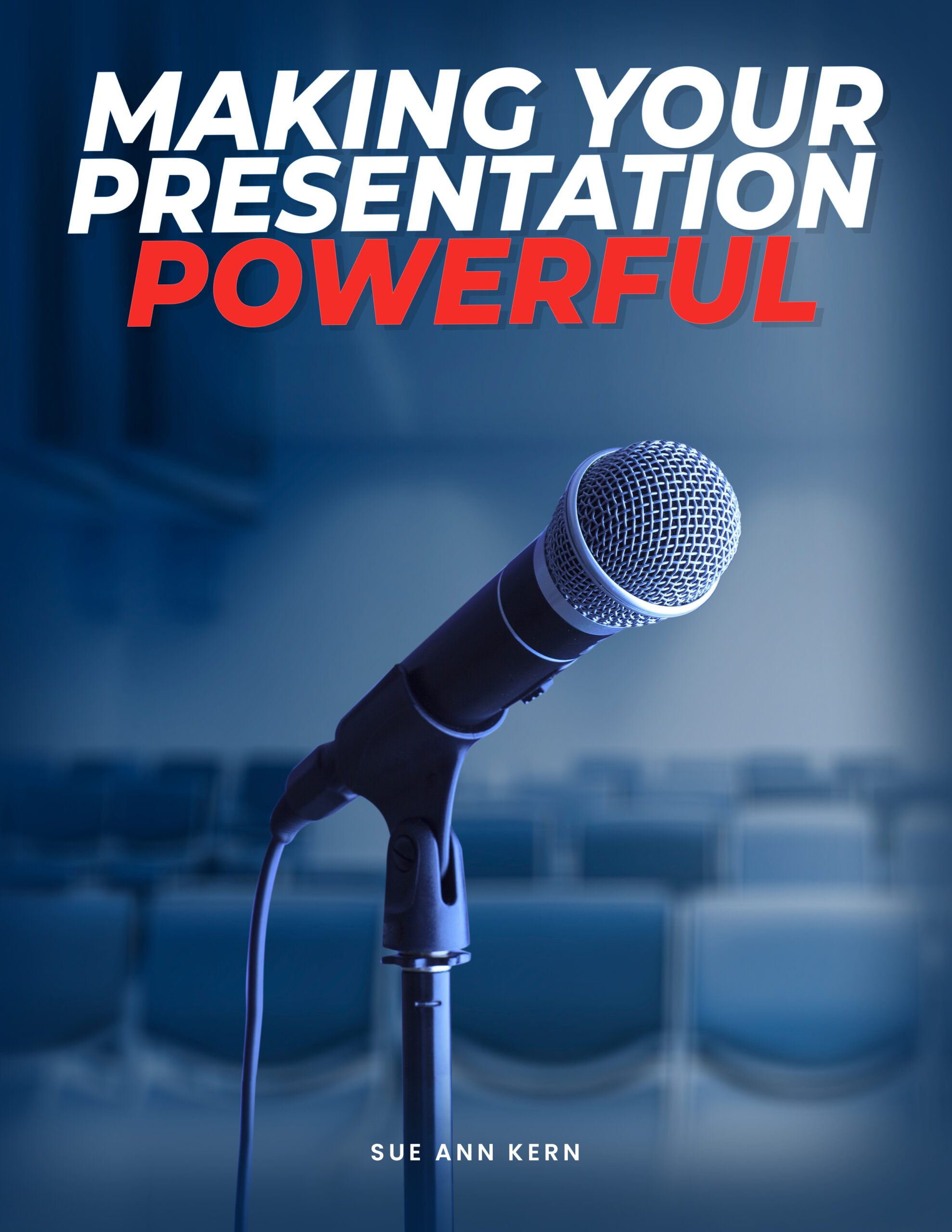
You may have heard that communication is 7% verbal, 38% vocal, and 55% visual. So, your speaking voice is an extremely important part of delivering your message when you are speaking in public. Your voice, along with your body language and gesturing, helps to express and enhance your words to fully communicate your message. Your voice will let the audience know more about your personality, your state of mind, your enthusiasm. Your voice can smile as much as your face can smile.
Your voice shows your passion, your compassion. Your voice puts meaning to your words. Your voice helps your audience to feel the emotions you are feeling. You can’t get people to get interested and excited if you speak in a monotone, too softly, or too loudly. When you are expressive, your audience will not just hear the words, they will experience the meaning of the words. Your job is not just to deliver words, but to deliver the meaning behind the words.
Have you ever listened to an audiobook and noticed how the narrator will change their pitch, rate, and/or volume to express different emotions and changes in the topic or idea? A good narrator can bring you into the story and make you visualize that you are there in the middle of all of the action.
What does your voice sound like? Is it melodic? Musical? Monotonic? Soft? Raspy? Squeaky? Harsh? Resonant? Monochromatic or colorful?
Do you have a “small voice?” Does your voice make you sound younger (not so bad) or less experienced (bad)? Are people surprised to see what you actually look like when they meet you in person after talking to you over the phone?
You may think that your voice is your voice and you’re stuck with it. Not so. When you are speaking to an audience, you need to learn how to use and improve your God-given voice to help effectively share your message and engage your audience.
An effective and engaging speaking voice has these features:
- Pleasing and approachable tone
- Natural and sincere
- Full of personality
- Energy, vitality, and animation
- Rhythmic, melodious, emotive
- Loud enough to be heard, even when speaking softly
- Articulate and coherent
How words are said – the pace, volume, and pitch – will affect how your message is received. Changes in your voice will also help you deliver your message more effectively. Imagine a speaker who speaks like they are reading a take-out menu and doesn’t change his or her pace. It may be hard to listen to them and you may tend to drift away and lose focus. But if the same message is given by a speaker who uses varies their volume, pace, and pitch, the delivery will be more pleasing, interesting, and memorable, even if it is a take-out menu!
Change your VOLUME to indicate important points. Speaking slowly and softly can cause your audience to lean in. Speaking loudly will let your audience know how passionate you are about something. A humorous punchline can be delivered with volume to help get the laugh. Play with the volume throughout your speech to keep your audience’s attention.
Play with the PITCH of your voice as well to emphasize points. Too high a pitch indicates excitability, a lack of authority, and could be a suggest immaturity. A pitch that is too low could make your speech sound muffled, indistinct, and inaudible. There are 4 types of pitch changes that you can make. Try saying the name “Marianne” using these changes and see how the pitch changes the meaning:
- No change
- Inflection up or rising pitch
- Inflection down or lowering pitch
- Inflection up and down
- Inflection down and up
Vary the RATE, or CADENCE of your speaking to add more interest. Speaking too slow will be a sure way to lose your audience to boredom, and speaking too fast indicates you might be tense, frenetic, or nervous, and will affect your ability to articulate, limit your ability to change your pitch, and affect your voice quality. Listeners may become frustrated and lose interest because they can’t follow you. Speak slowly enough to be understood but change the rate during your speech to reflect mood changes and emphasize important points.
Studies have shown that the most effective speaking rate is between 120 and 160 words per minute. (This is also a good way to determine how long your speech is when you are writing it. Check the work count on your word processor. If you are working on a 20-minute speech, you should have between 2400 and 3200 words.)
ARTICULATION is the term that describes how you formulate your words when you speak. It includes how you pronounce words and how you enunciate words. We’ve talked about how important it is to pronounce words correctly, and how mispronunciation must be avoided.
Enunciation refers to the fullness and clarity of the sounds that you make. How clearly you make the sounds of the letters. Just vs jist, length vs lenth, going to vs gonna, etc.
Articulation also includes how you put emphasis on the words in a phrase and how that changes the meaning:
I was born in New York
I was born in New York
I was born in New York
I was born in New York
I was born in New York

RELAX your throat to improve the quality of your voice. Drink a Throat Coat or Throat Comfort tea. Breathe!! A quality speaking voice comes from the diaphragm and depends on a constant supply of air. Stand up straight – hunching over, slouching, even thrusting a hip will reduce air flow.
Before you start, be sure to do side stretches and arm swings to open your chest cavity. Then try these simple exercises:
- Expel all of the air in your lungs and try to speak
- Tighten your vocal cords and try to speak
- Now relax your vocal cords and try to speak
- Repeat tongue twisters like “She sells sea shells down buy the sea shore.” Or “You know New York. You need New York. Unique New York.”
- Hum and trill your lips to supply blood to your resonators.
- Yawn repeatedly to get more oxygen into your lungs and to your brain.
Do some vocal warmup exercises before you speak. Vocal exercises should be done in small doses, no more than 5 minutes at a time to prevent straining your vocal cords. But try to do them spaced throughout the day.
The first step for you to develop your best speaking voice is to start listening to yourself. Pay attention to your voice as your day progresses. Evaluate how your voice sounds under different situations. What does your voice sound like when you are talking to a coworker? A prospective client? Your boss? Your best friend? Your child? Does your throat tighten when you get nervous? Learn to notice how your voice changes when you are stressed versus relaxed.
Record your voice and listen to how your message comes across based solely on your voice. Rerecord using some of the techniques I’ve described here and reassess how your message comes across!!!
Compare your social voice to your “business” or “serious” voice. Does it change? Does it flatten out? Bring your social voice on stage!
Every time you speak in public, you involve your entire self. Your voice, your body movement, and your eyes say as much as your words. We are more affected by HOW a speaker speaks than WHAT a speaker says. To engage and inspire your audience, and to be more conversational and relatable, practice using your body, voice, facial expressions, and eye contact to convey your emotions and energy.
